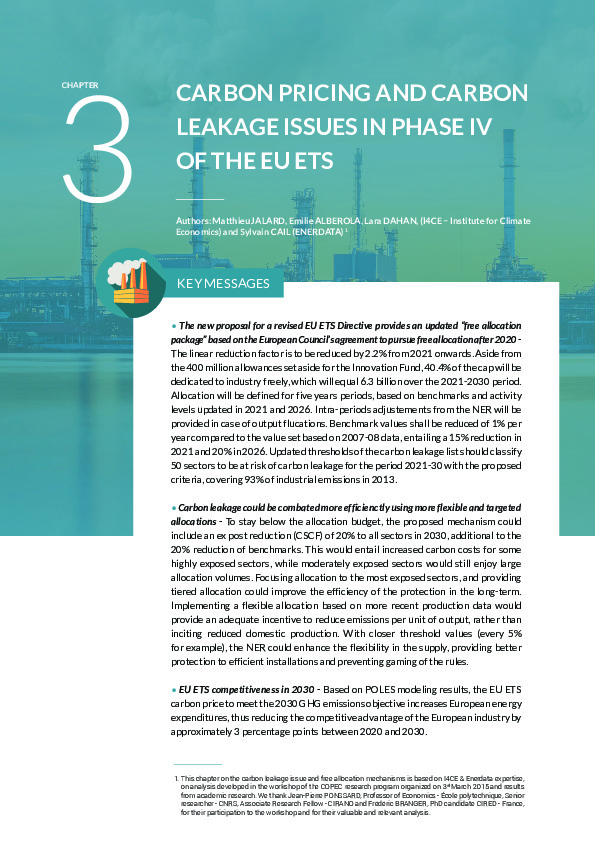COPEC Chapter 3: CARBON PRICING AND CARBON LEAKAGE ISSUES IN PHASE IV OF THE EU ETS
This Publication is an extract from the Coordination of EU Policies on Energy and CO2 (COPEC) report, produced jointly by I4CE – Institute for Climate Economics and Enerdata, and in collaboration with IFPen. The report provides new, factual, independent and quantified analysis on EU ETS operationality by 2030, to examine the necessary conditions to improve its environmental and economic effectiveness.
COPEC Chapter 3 on carbon pricing and carbon leakage issues in Phase IV of the EU ETS;
– provides a sythesis of the EU Commission’s proposals on the free allocation mechanism in its proposal for a revised EU ETS Directive released on July 15th 2015
– reviews the main lessons from the first Phases of the EU ETS along with related economic literature
– analyses the sustainability of different free allocation mechanisms for 2030, and the rules proposed by the European Commission
– demonstrates consequences for the industry with an analysis of several variables for the EU ETS carbon price by 2030 on competitiveness
– examines three other emissions trading schemes tackling carbon leakage issues and how they utilise free allocation mechanisms
